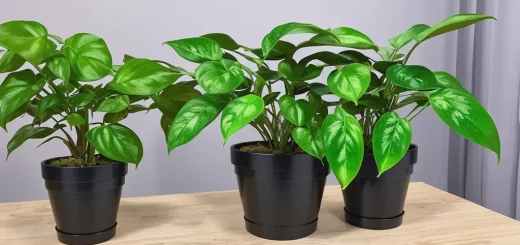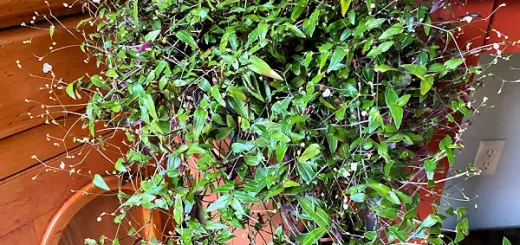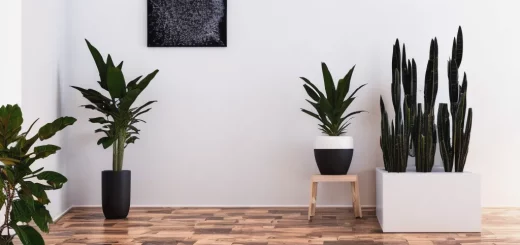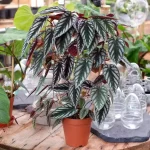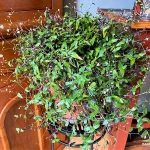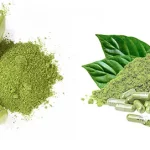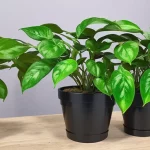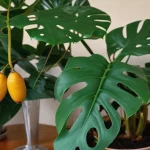Do indoor plants attract bugs!
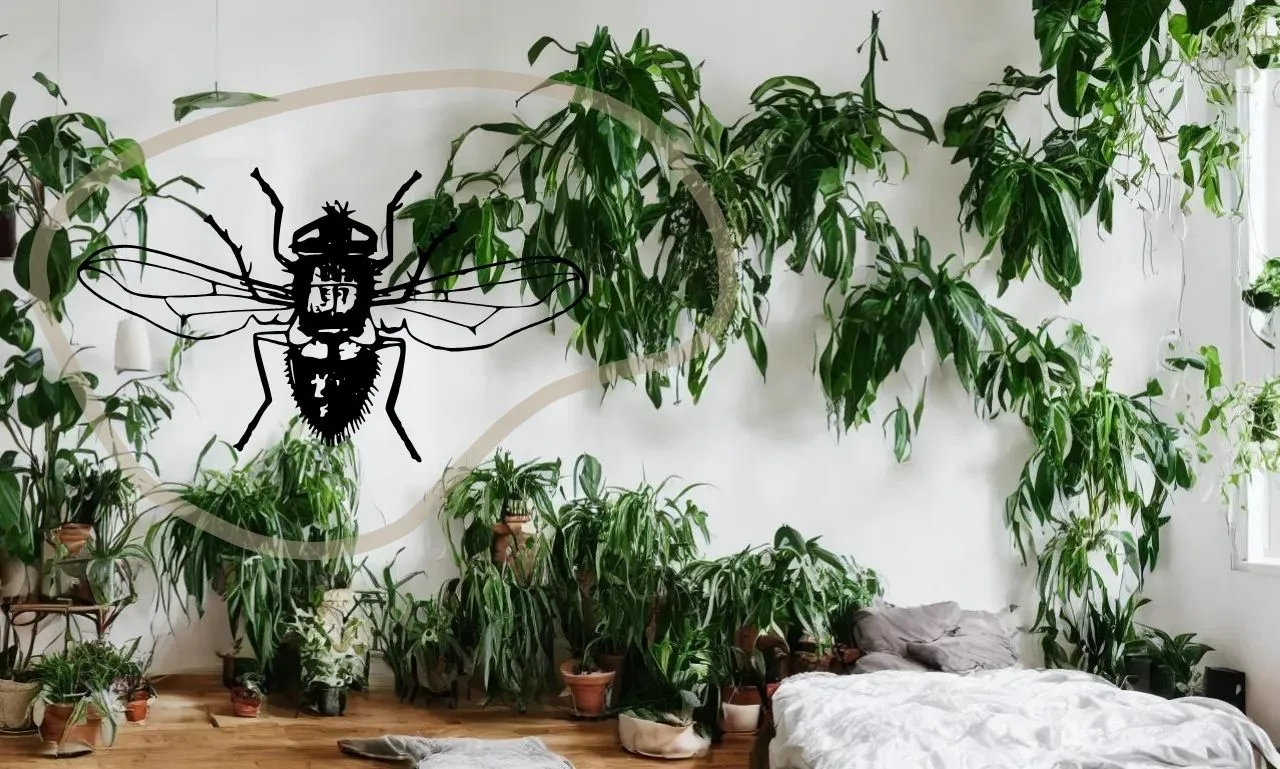
Table of Contents
Introduction to indoor plants and bugs
Indoor plants have become increasingly popular in recent years, not only for their aesthetic appeal but also for their numerous benefits. These green companions have the power to improve air quality, reduce stress, and create a soothing and relaxing environment. However, plant enthusiasts often face a common challenge: dealing with the pesky creatures that can infest their indoor plants. In this article, we will explore the different types of indoor plant pests and their harmful effects. We will also discuss preventive measures, natural remedies, and professional assistance to help you enjoy the beauty of indoor plants without the creepy crawlies.
Types of Common Indoor Plant Pests
Indoor plants are not immune to infestations, and various pests can pose a threat to their health and vitality. Here are some of the most common pests you may encounter:
- Aphids: These small, pear-shaped pests are notorious for attacking tender new growth, causing leaf curling, yellowing, and stunted growth.
- Spider Mites: These minuscule arachnids may be small, but their impact is significant. They spin fine webs and suck sap from leaves, resulting in yellowing, bronzing, and eventual leaf drop.
- Fungus Gnats: These annoying flying insects are attracted to the moist environment of potted plants. Their larvae feed on plant roots, leading to weakened growth and yellowing leaves.
- Whiteflies: These tiny, white-winged insects may seem harmless, but they can severely damage your indoor plants. They pierce the foliage and suck sap, causing wilting, leaf yellowing, and a sticky residue known as honeydew.
- Mealybugs: These soft-bodied, segmented pests infest the crevices of leaves and stems. They feed on plant sap and secrete a cotton-like substance, weakening the plant and hindering photosynthesis.
Understanding the Harmful Effects of Plant Pests
Plant pests can wreak havoc on your indoor greenery, affecting their growth and overall health. Here are some of the harmful effects they can have:
- Damage to Plant Tissue: Pests, such as aphids and spider mites, feed on the vital sap of plants, causing wilting, yellowing, and distorted growth.
- Stunted Development: Prolonged infestations can hinder the plant’s ability to grow and reach its full potential.
- Spread of Disease: Some pests act as vectors, carrying and spreading harmful pathogens that can further weaken the plant and lead to diseases.
- Reduced Aesthetic Value: Pests often leave behind unsightly signs, such as webbing, sticky residue, or discolored leaves, which diminish the visual appeal of your indoor plants.
Prevention: Setting Up a Pest-Free Environment
Prevention is key when it comes to maintaining a pest-free indoor garden. Consider the following measures to create a conducive environment for your plants:
- Proper Plant Selection: Choose indoor plants known for their resilience against common pests. Research their pest resistance characteristics before bringing them home.
- Source Healthy Plants: Purchase plants from reputable nurseries or plant shops to minimize the risk of introducing pests. Inspect the plants thoroughly for any signs of infestation, such as discolored leaves, webbing, or insects.
- Quarantine New Plants: Isolate new additions to your plant collection for a few weeks to monitor them for any signs of pests or diseases. This will protect your established plants from potential infestations.
- Maintain Optimal Growing Conditions: Indoor plants thrive in specific environmental conditions. Provide adequate light, maintain appropriate temperature and humidity levels, and ensure proper watering techniques to keep the plants healthy and less susceptible to pests.
Maintaining Optimal Conditions to Keep Pests Away
To create an environment that deters pests from infesting your indoor plants, it’s important to pay attention to the following factors:
- Sufficient Light and Temperature: Different plant species require varying levels of light and temperature. Read up on the specific requirements of your plants and ensure they receive the appropriate amount of light and are kept within their preferred temperature range.
- Appropriate Watering Techniques: Overwatering can create a damp environment that attracts pests, while underwatering can stress the plants and make them more susceptible to infestations. Water your plants thoroughly but allow the soil to dry out slightly between waterings.
- Proper Humidity Levels: Many pests thrive in high humidity environments. Monitor the humidity levels in your indoor space and use a humidifier or dehumidifier, if necessary, to maintain optimal conditions for your plants while deterring pests.
Natural Remedies to Combat Indoor Plant Pests
If pests make their way into your indoor garden, there are several non-toxic methods you can employ to control and eliminate them:
- Beneficial Insects: Introduce natural predators, such as ladybugs or lacewings, which feed on common pests like aphids and mites. These beneficial insects can help keep pest populations in check.
- Homemade Pest-Repelling Sprays: Create your own pest-repelling spray by mixing ingredients like neem oil, garlic, or soap with water. These natural solutions will deter pests and disrupt their life cycles.
- Pest-Deterring Plants: Incorporate companion plants, such as marigolds or lavender, which naturally repel pests due to their strong scent or chemical properties. These plants act as a natural barrier to protect your indoor garden.
Pest Control Products: Choosing the Right Options
While natural remedies can be effective, there are instances when you may need to resort to pest control products. When using such products, it’s essential to make informed choices:
- Chemical Pest Control vs. Organic Alternatives: Chemical pesticides may provide quick results, but they can also harm beneficial insects, pets, and even humans. Organic alternatives, such as botanical pesticides derived from plant extracts, offer a safer option.
- Organic Insecticidal Soaps: These soaps are made from natural fatty acids and are effective against soft-bodied pests like aphids and mealybugs. Follow the instructions carefully to ensure safe usage and minimal impact on your indoor plants.
- Precautions with Chemical Pesticides: If you must use chemical pesticides indoors, exercise caution. Read and follow the instructions meticulously, wear protective gear, and apply them sparingly to minimize any potential harm to your plants and surroundings.
Monitoring: Early Detection and Elimination of Pests
Regular monitoring is crucial to detect pests in their early stages and prevent their spread. Here’s what you can do:
- Identify Early Signs: Familiarize yourself with the common signs of pest infestations, such as discolored leaves, webbing, tiny insects on plant surfaces, or wilting. Prompt detection can help you take immediate action.
- Gentle Pest Removal: For a minor infestation, manually remove pests using cotton swabs, tweezers, or a gentle spray of water. Be careful not to damage the plants or spread pests to nearby plants during the removal process.
- Preventing Spread: Quarantine or separate infested plants from healthy ones to prevent pests from migrating. Keep a close eye on nearby plants and implement necessary control methods to stop the spread of pests.
Creating a Pest-Resistant Environment
Maintaining a clean and hygienic environment around your indoor plants can help deter pests. Consider the following practices:
- Cleanliness: Regularly remove fallen leaves, debris, and dead plant material from the surrounding area. Pests often thrive in these hiding places and can quickly infest your plants.
- Disinfecting Containers: Clean and disinfect your indoor plant containers before reusing them. This helps eliminate any residual pests or pathogens that may have been present.
- Sterilizing Gardening Tools: Keep your gardening tools clean and disinfected to avoid transferring pests from one plant to another. Sterilize tools using a mild bleach solution or rubbing alcohol.
- Avoid Over-Fertilization: Over-fertilization can lead to lush growth, which is more appealing to pests. Follow the recommended fertilization guidelines for your specific plants and monitor their nutritional needs.
Seeking Professional Help: When to Consult an Expert
While many pest issues can be handled using DIY methods, there are situations where professional intervention is necessary:
- Beyond DIY Control: If your attempts to control the pests have proven unsuccessful or the infestation persists and spreads despite your efforts, it may be time to seek professional assistance.
- Severe Infestations: Recognize signs of severe infestations, such as extensive damage, rapid plant decline, or the presence of particularly aggressive pests. Professionals have the knowledge and tools to tackle such challenging situations effectively.
- Specialized Pest Control Services: Contact specialized pest control services that have experience in dealing with indoor plant pests. They can provide targeted treatments while ensuring the safety of your plants and the surrounding environment.
Combating Seasonal Pests: Preparing in Advance
Different seasons bring different pest challenges. Take proactive measures to prevent seasonal pest outbreaks:
- Precautionary Measures: Research and prepare for common pests that are prevalent during specific seasons. Implement preventive measures, such as installing mesh screens on windows and doors to keep outdoor pests from entering your home.
- Adjusting Indoor Conditions: Understand the behavior and activity patterns of pests during different months and adjust the indoor conditions accordingly. For example, certain pests may be more active during warmer months, requiring additional monitoring and control.
- Preventing Outdoor Pests: Minimize the risk of outdoor pests finding their way indoors by practicing good gardening habits. Keep outdoor plants healthy, remove any dead or infested foliage, and maintain a tidy yard to deter pests from taking up residence near your home.
Troubleshooting Guide: Addressing the Most Frequent Pest Issues
When dealing with indoor plant pests, it’s helpful to know how to identify and address specific problems:
- Gnats and Flies: Troublesome flying pests hovering around indoor plants can often be eliminated by reducing excessive moisture and using biological controls like Bacillus thuringiensis.
- Spider Mites: Sticky leaves and web formations indicate the presence of spider mites. Introduce predatory mites or use an insecticidal soap to control their population and prevent further damage.
- Mealybugs: These small, pear-shaped pests invade your leafy companions, secreting a cotton-like substance. Physically remove them using cotton swabs dipped in alcohol or apply neem oil to discourage their presence.
- Aphids: Tiny, sap-sucking aphids can multiply rapidly. Control their population by using a strong jet of water to dislodge them, introducing natural predators, or applying horticultural oils.
How to Revive Pest-Damaged Plants
If your plants have suffered damage due to pest infestations, don’t lose hope. Follow these steps to revive and restore them:
- Assessing the Damage: Evaluate the extent of the damage caused by pests. Prune any severely affected areas and remove infested leaves. This helps redirect the plant’s energy towards healthy growth.
- Remedial Measures: Provide optimal growing conditions, such as appropriate light, temperature, and humidity levels. Supplement with plant-specific fertilizers to replenish nutrients and support the plant’s recovery.
- Patience and Consistency: Healing takes time, so be patient with your pest-damaged plants. Consistently follow a care routine tailored to their needs, monitor progress, and make adjustments as necessary.
Beautifying Your Indoor Jungle: Pest-Free Plant Display Tips
Once you have successfully controlled pests and restored your indoor plants’ health, it’s time to beautify your space. Consider these tips for an aesthetically pleasing indoor jungle:
- Creative Arrangements and Placement: Experiment with different arrangements and groupings of plants, varying heights, textures, and colors. This adds depth and visual interest to your indoor garden.
- Mixing and Matching: Combine different plant species with contrasting leaf shapes, colors, and growth habits. This creates a vibrant and diverse plant display while minimizing the risk of large-scale infestations.
- Creating Visual Boundaries: Position plants strategically to create physical barriers that deter pests from spreading. For example, place pest-resistant plants near susceptible ones to act as natural repellents.
Cultivating a Long-Term Pest Prevention Routine
Preventing future pest infestations requires ongoing commitment. Follow these steps to establish a long-term pest prevention routine:
- Regular Inspection Schedule: Set aside dedicated time to inspect your indoor plants on a regular basis. Monitor for any signs of pests or diseases and take immediate action if detected.
- Periodic Plant Maintenance: Maintain your plants’ overall health through regular practices like pruning, cleaning, and proper watering. Healthy plants are more resilient to pests and better equipped to prevent infestations.
- Sustainable Practices: Embrace eco-friendly pest control and plant care practices. Opt for natural remedies whenever possible, minimize the use of chemicals, and incorporate sustainable techniques, such as composting and water conservation.
Summary
Indoor plants have the ability to transform your living space into a serene oasis, but the presence of pests can quickly spoil the experience. By understanding the different types of pests and their harmful effects, implementing preventive measures, and utilizing natural remedies, you can enjoy the beauty of indoor plants without the creepy crawlies. Regular monitoring, maintaining optimal conditions, and seeking professional help when necessary will ensure a pest-free environment. By cultivating a long-term pest prevention routine and troubleshooting any issues that arise, you can create a thriving indoor jungle that enhances your well-being and brings joy to your life.
FAQs
Are indoor plants more prone to pests than outdoor plants?
Indoor plants can be more susceptible to certain pests due to the controlled environment and lack of natural predators. However, proper care, preventive measures, and regular monitoring can greatly reduce the risk of infestations.
Can pest infestations harm humans or pets?
While most indoor plant pests primarily target plants, some pests such as spider mites, mealybugs, and aphids can bite or irritate humans. It’s important to handle infestations promptly to minimize any potential risks.
Are chemical pesticides safe to use around indoor plants?
Chemical pesticides should be used with caution around indoor plants, as they may have harmful effects on beneficial insects, pets, and even humans. Whenever possible, consider organic alternatives or seek professional advice on safe and targeted applications.
How long does it take to restore a pest-damaged indoor plant?
The time it takes to restore a pest-damaged indoor plant depends on the severity of the damage, the resilience of the plant species, and the effectiveness of the restoration efforts. With proper care and treatment, plants can show signs of recovery within weeks or months.
Can I completely eradicate pests from my indoor garden without professional help?
In many cases, pests can be effectively controlled and eliminated without professional help. By following preventive measures, utilizing natural remedies, and implementing regular monitoring, you can maintain a pest-free indoor garden. However, severe infestations or persistent pest problems may require the expertise of specialized pest control services.
